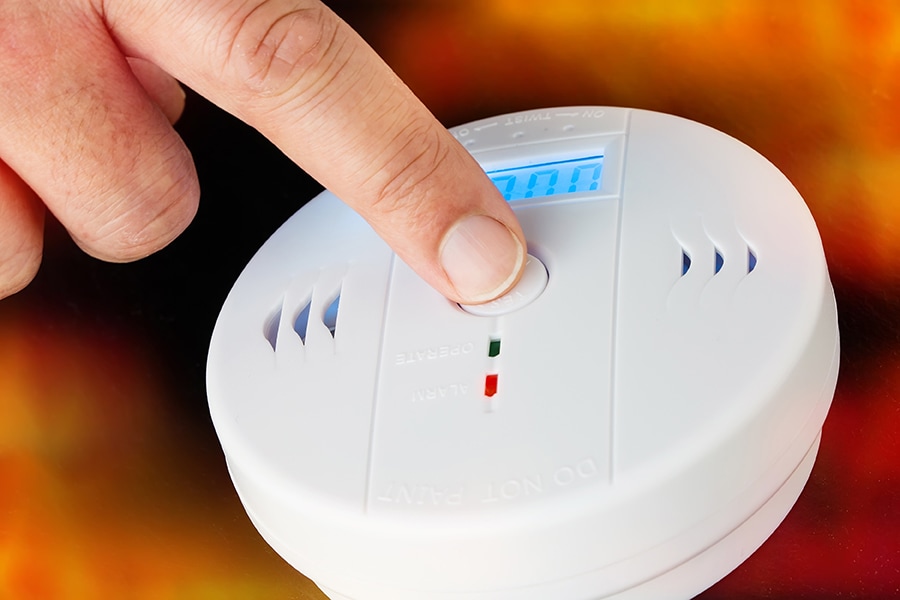Carbon monoxide is produced when carbon fuel isn’t completely burned. Both manufactured and natural sources produce carbon monoxide, including gas furnaces, wood-burning stoves and the exhaust from your car.
How long does it take to air out carbon monoxide?
Many devices in the home also produce carbon monoxide gas, but it’s filtered outside the home through ventilation or exhaust pipes. Sometimes the ventilation system or the appliance can malfunction, causing CO gas to leak into your home.
A carbon monoxide gas leak could happen if
- The gas range experiences a blockage.
- The water heater can’t properly move the CO gas out of the home.
- The furnace or chimney’s heat exchanger is damaged.
- A portable generator or space heater breaks.
How long does it take to show signs of carbon monoxide poisoning?
Carbon monoxide will affect different people depending on several factors.
- The amount of carbon monoxide gas in your home.
- Length of CO exposure.
- Your current health.
- Whether you have respiratory issues, a heart condition, anemia or other health conditions.
- If you’re pregnant.
- Older adults and infants may experience more severe symptoms.


What are the stages of carbon monoxide poisoning?
Different symptoms are associated with carbon monoxide poisoning, depending on the concentration of CO in your home and how long it’s been building up. The longer you’re exposed to carbon monoxide, the more severe your symptoms may be.
Low levels of carbon monoxide gas include:
- Nausea
- Dizziness
- Mild to moderate headache
- Tiredness or fatigue
- Shortness of breath
As you continue to breathe in CO gas, your symptoms may worsen. Sustained exposure could lead to more severe complications.
- Increased nausea or vomiting
- Chest pains or tightness
- Suddenly feeling sleepy
- Confusion
- Irritability
- Reduced judgment
As high levels of CO continue to build up in your home, symptoms become even worse and could eventually lead to death or brain damage.
- Vomiting
- Lack of coordination
- Loss of consciousness
- Increased disorientation
- Brain damage
- Death
How long does carbon monoxide last?
Carbon monoxide infiltrates your entire body when you breathe it, including your blood, brain, heart and muscles. CO leaves your body when you exhale, but it can take up to a day [1].
Carboxyhemoglobin forms in red blood cells when carbon monoxide gets into your bloodstream. Its half-life is approximately four hours in the fresh air. The treatment for severe carbon monoxide inhalation is using oxygen or hyperbaric chambers to minimize the CO in your system, which you will need to do at a hospital.
The carbon monoxide levels in your home are measured by parts per million (ppm) and the time you’re exposed.
Carbon Monoxide Levels
Parts Per Million |
Response Time |
40 ppm |
10 hours |
50 ppm |
8 hours |
70 ppm |
1 to 4 hours |
150 ppm |
10 to 50 minutes |
400 ppm |
4 to 15 minutes |
Source: Kidde, What Are the Carbon Monoxide Levels That Will Sound the Alarm?, October 4, 2019.
What should you do if you’ve been exposed to carbon monoxide?
If your CO alarm is going off, you should immediately grab your family and pets and get into fresh air. Open any windows you can on your way out. Once outside, call 911.
According to the CDC, the most common symptoms include headache, weakness, nausea, chest pain, confusion or vomiting [2].
If someone is experiencing these gas leak symptoms, call an ambulance or go to the nearest hospital for oxygen treatment.
How long does it take to show signs of carbon monoxide poisoning?
How long it takes for carbon monoxide to affect your health depends on many factors. Higher concentrations of the gas can kill you in less than five minutes, while lower concentrations can take several hours.
Carbon levels in the home:
- 50 ppm and below is a low threshold, and most healthy adults don’t show symptoms. Minimal to no noticeable effects within 8 hours.
- 200 ppm: Within a couple of hours, you may start experiencing a slight headache, fatigue, nausea or dizziness.
- 400 ppm: After 1 to 2 hours of contact, a headache and nausea may occur; more life-threatening symptoms can occur after three hours.
- 800 ppm: After 45 minutes, symptoms include headache, nausea and dizziness. You might collapse or become unconscious after 1 to 2 hours of exposure. You can die at this exposure level within 2 to 3 hours.
- 1,000 ppm: After 1 hour of exposure, possible unconsciousness.
- 1,600 ppm: Within 20 minutes after carbon monoxide exposure, you may feel a severe headache or migraine, increased nausea and feelings of dizziness. Potential death within one hour.
- 3,200 ppm: After only 5 to 10 minutes, headache, nausea, and dizziness may occur. And after 30 minutes of gas exposure, collapse and unconsciousness.
- 6,400 ppm: After 1 to 2 minutes, similar symptoms of headache and dizziness. Loss of consciousness and potential death within 10 to 15 minutes.
- 12,800 ppm: After 1 to 3 minutes, you may lose consciousness or die.
[Source 3] [Source 4]


Will my carbon monoxide alarms go off for no reason?
Your alarm should only go off if it senses carbon monoxide over a certain period and only when those levels have accumulated unsafe CO levels.
Your carbon monoxide alarm will continue to beep unless muted or until the CO gas levels drop.
What does it mean if your carbon monoxide alarm goes off every 30 seconds?
We’ve compiled a suggested list of reasons your alarm might beep, but you should read the manufacturer’s instructions to understand why your particular alarm is beeping.
- Continuous beeping or a siren sounding means that there’s a CO gas leak. You should exit the building and call 911 as soon as possible.
- Some carbon monoxide alarms will beep every 30 seconds if it’s time to replace the alarm. CO gas detectors typically have a seven-year lifespan, so simply replacing the battery won’t stop the beeping in this type of detector [5].
- Some plug-in carbon monoxide detectors might beep if there is a loose battery.
- If you have a model with LED battery-indication lights that flash while your CO alarm is chirping, you may need to replace it. Low battery alarms typically beep once a minute.
- Other rapid or frequent beeps may show your carbon monoxide alarm is malfunctioning in some other way. You should replace it immediately.
Carbon monoxide detectors help save lives.
ADT offers professional monitoring services that can help you keep an eye on what matters to you in your home—even when you’re not there. If your carbon monoxide alarm is triggered, we’ll call you, then send help if we can’t get ahold of you.
Get reliable carbon monoxide detection and rapid response with ADT today.
Frequently Asked Questions about Carbon Monoxide
Will a carbon monoxide alarm go off in a house fire right away, or does the CO have to build up?
Carbon monoxide levels must build up in your home before an alarm goes off. Since an alarm measures the amount of carbon monoxide over a certain period, it could take your detector hours to go off or 10 or 20 minutes if you have a lot of gas building up in your home.
Why does the red light flash on my carbon monoxide alarm?
A flashing red light is typical of many carbon monoxide detectors. It simply means that your alarm is functioning properly. However, some models are different, so you should always check the manufacturer’s instructions.
Where should you put a carbon monoxide detector?
You should place a carbon monoxide detector on every floor of your home, near a sleeping area. The EPA recommends placing carbon monoxide alarms five feet above the floor, on the wall or ceiling. Avoid placing your CO alarm near a fireplace, and put it high enough that it’s out of the way of children and pets.
Will my carbon monoxide alarm go off for no reason?
Your carbon monoxide detector should always go off for a reason. Either it senses carbon monoxide in your home, or it is malfunctioning. Read the manufacturer’s instructions to determine why your CO detector is beeping.
Related Articles:


